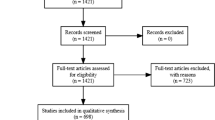Abstract
Beta-diversity, or how species composition changes with geographical distance, has seldom been studied for different habitats. We present here quantitative estimates of the relationship between geographic distance and similarity of parasitic nematode communities in two closely related rodent host species that live in habitats with very different spatial configurations. In southeastern Senegal Mastomys natalensis lives exclusively inside human villages whereas M. erythroleucus is continuously distributed outside villages. Both host species and their gastro-intestinal nematodes were sampled on the same spatial scale. Beta-diversity was found to be higher in parasite communities of M. erythroleucus than in those of M. natalensis, and significantly related to geographic distance in this first species. Even on the local spatial scale studied, host dispersal limitation, and stochastic events, may affect species turnover in nematode communities of M. erythroleucus. In M. natalensis, no relationship was found between geographic distance and nematode community similarity, however, suggesting low host dispersal rates between habitat patches. Together with previous population genetic results, this study illustrates the need for different approaches with regard to dispersal in natural populations and its effect on biodiversity.



Similar content being viewed by others
References
Berthier K, Galan M, Foltete JC, Charbonnel N, Cosson JF (2005) Genetic structure of the cyclic fossorial water vole (Arvicola terrestris): landscape and demographic influences. Mol Ecol 14:2861–2872
Biek R, Drummond AJ, Poss M (2006) A virus reveals population structure and recent demographic history of its carnivore host. Science 311:538–541
Brouat C, Kane M, Diouf M, Bâ K, Sall-Dramé R, Duplantier JM (2007) Host ecology and variation in helminth community structure in Mastomys rodents from Senegal. Parasitology (in press)
Chao A, Chazdon RL, Colwell RK, Shen TJ (2005) A new statistical approach for assessing compositional similarity based on incidence and abundance data. Ecol Lett 8:148–159
Chave J, Leigh EG Jr (2002) A spatially explicit neutral model of [beta]-diversity in tropical forests. Theor Popul Biol 62:153–168
Chust G, Chave J, Condit R, Aguilar S, Lao S, Pérez R (2006) Determinants and spatial modeling of tree beta-diversity in a tropical forest landscape in Panama. J Veg Sci 17:83–92
Colwell RK (2005) EstimateS: Statistical estimation of species richness and shared species from samples. Version 7.5. User’s Guide and application published at http://www.purl.oclc.org/estimates
Condit R, Pitman N, Leigh EG Jr, Chave J, Terborgh J, Foster RB, Nunez P, Aguilar S, Valencia R, Villa G, Muller-Landau HC, Losos E, Hubbell SP (2002) Beta-diversity in tropical forest trees. Science 295:666–669
Duplantier JM, Granjon L (1988). Occupation et utilisation de l’espace par des populations du genre Mastomys au Sénégal: étude à trois niveaux de perception. Sci Tech Anim Lab 13:129–133
Fellis KJ, Esch GW (2005) Variation in life cycle affects the distance decay of similarity among bluegill sunfish parasite communities. J Parasitol 91:1484–1486
Granjon L, Duplantier JM, Catalan J, Britton-Davidian J (1997) Systematics of the genus Mastomys (Thomas, 1915) (Rodentia: Muridae). Belg J Zool 127:S7–S18
Hanski I, Gilpin M (1991) Metapopulation dynamics: brief history and conceptual domain. Biol J Linn Soc 42:3–16
Hardy OJ, Sonke B (2004) Spatial pattern analysis of tree species distribution in a tropical rain forest of Cameroon: assessing the role of limited dispersal and niche differentiation. For Ecol Manag 197:191–202
Hubbell SP (2001) A unified neutral theory of biodiversity and biogeography. Monographs in population biology. Princeton University Press, Princeton
Krasnov BR, Shenbrot GI, Mouillot D, Khokhlova IS, Poulin R (2005) Spatial variation in species diversity and composition of flea assemblages in small mammalian hosts: geographical distance or faunal similarity? J Biogeogr 32:633–644
Lecomte E, Granjon L, Kerbis Peterhans J, Denys C (2002) Cytochrome b-based phylogeny of the Praomys group (Rodentia: Murinae): a new African radiation. C R Acad Sci Paris Ser III 325:1–14
Leigh EG, Wright SJ, Putz FE, Herre EA (1993) The decline of tree diversity on newly isolated tropical islands: a test of a null hypothesis and some implications. Evol Ecol 7:76–102
Magurran AE (2004) Measuring biological diversity. Blackwell, Oxford
Nekola JC, White PS (1999) The distance decay of similarity in biogeography and ecology. J Biogeogr 26:867–878
Oliva ME, González MT (2005) The decay of similarity over geographical distance in parasite communities of marine fishes. J Biogeogr 32:1327–1332
Pocock MJO, Searle JB, White PCL (2004) Adaptations of animals to commensal habitats: population dynamics of house mice Mus musculus domesticus on farms. J Anim Ecol 73:878–888
Poulin R (2003) The decay of similarity with geographical distance in parasite communities of vertebrate hosts. J Biogeogr 30:1609–1615
Poulin R, Morand S (1999) Geographic distances and the similarity among parasite communities of conspecific host populations. Parasitology 27:959–964
Raymond M, Rousset F (1995) GENEPOP version 1.2.: population genetics software for exact tests and ecumenicism. J Hered 86:248–249
SAS (2002) SAS for Windows 9.1. SAS Institute, Cary
Schluter D, Ricklefs RE (1993) Species diversity: an introduction to the problem. In: Ricklefs RE, Schluter D (eds) Species diversity in ecological communities. University Chicago Press, Chicago
Acknowledgments
The authors gratefully acknowledge the assistance of A. Loiseau, C. Bâ, and K. Bâ during field sampling, and N. Charbonnel, A. Dalecky, and S. Morand for their critical comments on the manuscript. M.-C. Durette-Desset and S. Bouamer provided valuable help with parasite identification.
Author information
Authors and Affiliations
Corresponding author
Additional information
Communicated by Hannu Ylonen.
Rights and permissions
About this article
Cite this article
Brouat, C., Duplantier, JM. Host habitat patchiness and the distance decay of similarity among gastro-intestinal nematode communities in two species of Mastomys (southeastern Senegal). Oecologia 152, 715–720 (2007). https://doi.org/10.1007/s00442-007-0680-8
Received:
Accepted:
Published:
Issue Date:
DOI: https://doi.org/10.1007/s00442-007-0680-8




